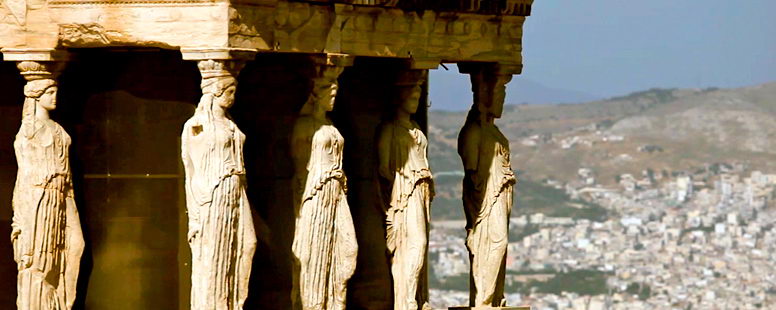Country of The Week

Greece,is a country in South east Europe.According to the 2011 census, Greece's population is around 11 million. Athens is the nation's capital and largest city, with its urban area including Piraeus.
Greece is strategically located at the crossroads of Europe, Asia, the Middle East, and Africa, and shares land borders with Albania to the northwest, the Republic of Macedonia and Bulgaria to the north and Turkey to the northeast. TheSee More
Greece,is a country in South east Europe.According to the 2011 census, Greece's population is around 11 million. Athens is the nation's capital and largest city, with its urban area including Piraeus.
Greece is strategically located at the crossroads of Europe, Asia, the Middle East, and Africa, and shares land borders with Albania to the northwest, the Republic of Macedonia and Bulgaria to the north and Turkey to the northeast. The country consists of nine geographic regions: Macedonia, Central Greece, the Peloponnese, Thessaly, Epirus, the Aegean Islands (including the Dodecanese and Cyclades), Thrace, Crete, and the Ionian Islands. The Aegean Sea lies to the east of the mainland, the Ionian Sea to the west, and the Mediterranean Sea to the south. Greece has the 11th longest coastline in the world at 13,676 km (8,498 mi) in length, featuring a vast number of islands (approximately 1,400, of which 227 are inhabited). Eighty percent of Greece consists of mountains, of which Mount Olympus is the highest, at 2,917 m (9,570 ft).
Modern Greece traces its roots to the civilization of Ancient Greece, considered the cradle of Western civilization. As such it is the birthplace of democracy,Western philosophy,the Olympic Games, Western literature and historiography, political science, major scientific and mathematical principles,[18] and Western drama,[19] including both tragedy and comedy. The cultural and technological achievements of Greece greatly influenced the world, both East and West. Many aspects of the Greek civilization were imparted to the East thanks to Alexander the Great's campaigns, and to the West since Roman hegemony in the area. This legacy is partly reflected in the 17 UNESCO World Heritage Sites located in Greece, ranking it 7th in Europe and 13th in the world. Greek language, culture, and identity emerged early in human history, having endured centuries of significant political and social change, including foreign domination. The modern Greek state, which encompasses much of the historical core of Greek civilization, was established in 1830, following the Greek War of Independence from the Ottoman Empire. A competitive string of republics and monarchies was ended by the Greek military junta of 1967–74, which saw a a republican constitution enacted by the junta adapted by plebiscite, following the restoration of democratic government. Greece subsequently joined the European Union and the European Monetary Union. The worldwide recession onset in 2007 hit Greece particularly hard, with an unemployment rate surpassing 27 % in 2013, a massively shrinking economy, and widespread political turmoil After the June 2012 election, the second in six weeks, a national coalition government was inaugurated that encompassed both the dominant parties of the Third Republic, PASOK and New Democracy, with the latter's leader Antonis Samaras as Prime Minister.
Greece is a founding member of the United Nations, the European Union and the Council of Europe. It is also a member of the euro area and of many other international organizations, including NATO,[a] the OECD, the OSCE, BSEC and La Francophonie.
Greece is a developed country with an advanced, high-income economy,a relatively high standard of living and a very high Human Development Index. Greece's economy is also the largest in the Balkans, where Greece is an important regional investor. Freedom House rated Greece as an "electoral democracy" in its 2013 report; bearing the official name "Hellenic Democracy", usually translated as "Hellenic Republic"), it has consistently been the only country with the term in its name to bear the rank Less






